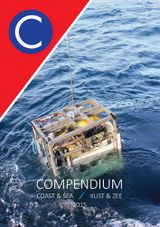|
|
| (142 intermediate revisions by 4 users not shown) |
| Line 1: |
Line 1: |
| − | ==Chemical and conventional ammunition in the Baltic Sea== | + | <div style="float:right; margin-left:10px; margin-top:5px">[[File:Compendiumcoastandsea.jpg|160px|right|link=Compendium for Coast and Sea - creating a marine science-policy interface]]</div> |
| − | | + | '''Compendium for Coast and Sea - creating a marine science-policy interface''' |
| − | [[image:Fig-1_german-coast.jpg|thumb|450px|right|Figure 1: Dumping sites and areas of suspicion concerning dumped ammunition at the German Baltic Sea coast]] | + | <p style="margin-top:-15px"><br/></p> |
| − | | + | The Compendium for Coast and Sea is an integrated knowledge document about the socio-economic, environmental and institutional aspects of the coast and sea in Flanders and Belgium. As such, it constitutes a one-stop shop for data and information from the Flemish and Belgian marine and maritime research community and experts. The Compendium for Coast and Sea is an initiative of the Flanders Marine Institute (VLIZ) and was developed in close collaboration with experts from the research community, government, industry and civil society organisations. The first version of the Compendium was launched in 2013, a second edition was presented in 2015. |
| − | At the end of World War II it was necessary to find a fast and economical way of disposal for the enormous quantities of no more required conventional and chemical ammunition from German and allied stocks. Usual methods of destruction like detonation, burning or even simple emptying soon emerged as very time-consuming and dangerous. Dumping at sea seemed to be the much more efficient and – concerning the general security – the less problematic solution attempt. Environmental aspects and the issue of protection of the sea were completely ignored at that time.
| + | </div> |
| − | | |
| − | Details about type and amount of sea dumped conventional and chemical ammunition vary considerably. Trends indicate that the biggest part of conventional ammunition were dumped in the German coastal waters within the 12-nautical miles zone, while the both biggest dumping sites for chemical ammunition are located in the Skagerrak and the Bornholm Basin.
| |
| − | | |
| − | Based on diverse accidents, especially concerning fishery, a discussion about possible risk potentials of dumped ammunition for humans and environment arose mid of the 1980’s in which context first assessments finished that a fairly long-term threat for the marine environment can not be ruled out and that the existing, quite considerable lacks of knowledge – especially concerning ecotoxicology – have to be filled by specific investigations.
| |
| − | | |
| − | Overall, 16 areas at the German Baltic coast are marked as “unrein Munition” (polluted by ammunition) on maritime shipping charts (Koch & Nehring 2007<ref>Koch, M. & Nehring, S. (2007): Rüstungsaltlasten in den deutschen Küstengewässern - Vorschläge für Sanierungsstrategien im Kontext der Europäischen Wasserrahmenrichtlinie. – Rostocker Meeresbiologische Beiträge 17: 39-54.
| |
| − | </ref>) (Figure 1). Amounts of dumped ammunition in these areas are – in contrast to the dumping activities in the North Sea – completely unknown. However, a total amount of more than 100,000 tons of ammunition can be assumed, comprising for the most part conventional ammunition (SHL 2001<ref name="shl">SHL (2001): Kampfmittel in Küstengewässern. Antwort der Landesregierung auf eine kleine Anfrage. – Schleswig-Holsteinischer Landtag, Drucksache 15/1226: 1-7; Kiel.</ref>).
| |
Latest revision as of 14:52, 8 April 2016
Compendium for Coast and Sea - creating a marine science-policy interface
The Compendium for Coast and Sea is an integrated knowledge document about the socio-economic, environmental and institutional aspects of the coast and sea in Flanders and Belgium. As such, it constitutes a one-stop shop for data and information from the Flemish and Belgian marine and maritime research community and experts. The Compendium for Coast and Sea is an initiative of the Flanders Marine Institute (VLIZ) and was developed in close collaboration with experts from the research community, government, industry and civil society organisations. The first version of the Compendium was launched in 2013, a second edition was presented in 2015.
